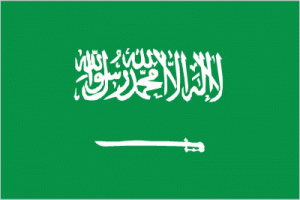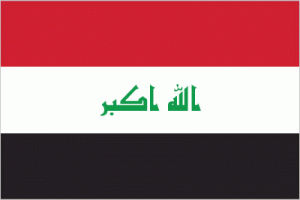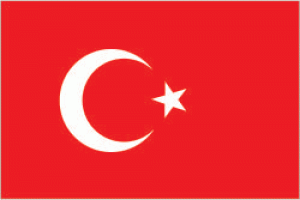Countries in Western Asia and Their Capitals
How Many Countries in Western Asia
As a region of Asia, Western Asia is composed of 19 independent countries (Armenia, Azerbaijan, Bahrain, Cyprus, Georgia, Iran, Iraq, Israel, Jordan, Kuwait, Lebanon, Oman, Palestine, Qatar, Saudi Arabia, Syria, Turkey, United Arab Emirates, and Yemen). Also called the Middle East, East Asia has the following 19 countries:
1. Saudi Arabia
Saudi Arabia, formally the Kingdom of Saudi Arabia, is a kingdom located on the Arabian Peninsula in southwest Asia. The country borders Jordan, Iraq, Kuwait, the Persian Gulf, Bahrain, Qatar, the United Arab Emirates, Oman, Yemen and the Red Sea.
 |
|
2. Armenia
Armenia is a republic in the South Caucasus in West Asia. Armenia is a landlocked state bordering Georgia, Turkey, Azerbaijan and Iran. Geographically, Armenia is often considered to be in Asia, but the country’s political and cultural ties to Europe mean that it is often included among European countries. Armenian is the official language of the country and more than 3 million people live in Armenia.
 |
|
3. Azerbaijan
Azerbaijan is a republic in the southeastern Caucasus that is geographically located mostly in Asia but with a small strip of land in Europe. The UN counts Azerbaijan as a West Asian country but is politically counted as European. There are about 9.4 million people living in Azerbaijan.
 |
|
4. Bahrain
Bahrain is an island nation located in the Persian Gulf with about 800,000 residents. The country consists of 33 islands and the island of Bahrain is the largest. The capital Manama is located in Bahrain and the country has a maritime border with Qatar and Saudi Arabia.
 |
|
5. Cyprus
Cyprus is an island nation in the eastern Mediterranean east of Greece, south of Turkey, west of Syria and north of Egypt. Cyprus is the third largest island in the Mediterranean and is geographically counted as Asia but politically mostly in Europe.
 |
|
6. United Arab Emirates
The United Arab Emirates is a country located at the southeastern end of the Arabian Peninsula in the Persian Gulf, bordering Oman in the east and Saudi Arabia in the south, and sharing maritime borders with Qatar and Iran. In 2013, the total population of the United Arab Emirates was 9.2 million; 1.4 million emirates and 7.8 million foreigners.
 |
|
7. Georgia
Georgia is a republic in the Caucasus, geographically the country is located in southwest Asia and to a small extent in southeastern Europe. Georgia borders Russia, Azerbaijan, Armenia and Turkey. The capital is Tbilisi.
 |
|
8. Yemen
Yemen, alternatively Yemen, formally the Republic of Yemen, is a state on the southern Arabian Peninsula in southwest Asia. Yemen means The Land on the Right and is the area in southern Arabia that the ancient Greek and Roman geographers called Arabia Felix.
 |
|
9. Iraq
Iraq, formally the Republic of Iraq, is a republic in the Middle East in southwest Asia. The country borders Saudi Arabia and Kuwait to the south, Turkey to the north, Syria to the northwest, Jordan to the west and Iran to the east.
 |
|
10. Iran
Iran as a varied Middle East, Middle East, South Asia, Southwest Asia, and West Asia. The name Iran was used domestically during the Sasanian era before the Arab-Muslim invasion around 650 BC. and has been used internationally since 1935.
 |
|
11. Israel
Israel, formally the State of Israel, is a state in the Middle East of Asia. The State of Israel was proclaimed on 14 May 1948 following a non-binding UN decision by dividing the British mandate Palestine between Jewish and Arab-ruled territories.
 |
|
12. Jordan
Jordan, formally the Hashimite Kingdom of Jordan, is an Arab state in the Middle East. The capital is Amman. The country borders Syria to the north, Iraq to the east, Saudi Arabia to the southeast and Israel, as well as the Palestinian West Bank to the west.
 |
|
13. Kuwait
Kuwait, formally the State of Kuwait, is a state on the Arabian Peninsula on the northwestern Persian Gulf that borders Saudi Arabia and Iraq. The capital is Madīnat al-Kuwayt. The country became an independent state in 1961.
 |
|
14. Lebanon
Lebanon, formally the Republic of Lebanon, is a state in the Middle East on the eastern Mediterranean coast. The country borders Syria and Israel.
 |
|
15. Oman
Oman, formally the Sultanate of Oman, is a country located in the eastern corner of the Arabian Peninsula. Oman borders the United Arab Emirates to the northwest, Saudi Arabia to the west and Yemen to the southwest and has a long coastline to the Arabian Sea to the east and the Gulf of Oman to the northeast.
 |
|
16. Palestine
 |
|
17. Qatar
Qatar formally The state of Qatar, is an emirate consisting of a peninsula located in the Persian Gulf on the northeastern coast of the Arabian Peninsula. The country borders Saudi Arabia to the south and also has a maritime border with Bahrain.
 |
|
18. Syria
Syria, formally the Syrian Arab Republic, or the Syrian Arab Republic, is a state in the Middle East. The country’s capital is Damascus. The country borders Jordan, Lebanon, Iraq, Turkey and Israel.
 |
|
19. Turkey
Turkey, officially the Republic of Turkey, is a Eurasian country that stretches across the Anatolian Peninsula in southwest Asia and Eastern Thrace on the Balkan Peninsula in southeastern Europe.
 |
|
List of Countries in Western Asia and Their Capitals
As noted above, there are nineteen independent countries in the West Asia. Among them, the largest country is Iran and the smallest is Cyprus in term of population. The full list of Western Asia countries with capitals is shown in the table below, ranked by latest total population and area.
| Rank | Country Name | Population | Land Area (km²) | Capital |
| 1 | Iran | 82,545,300 | 1,531,595 | Tehran |
| 2 | Turkey | 82,003,882 | 769,632 | Ankara |
| 3 | Iraq | 39,127,900 | 437,367 | Baghdad |
| 4 | Saudi Arabia | 33,413,660 | 2,149,690 | Riyadh |
| 5 | Yemen | 29,161,922 | 527,968 | Sanaa |
| 6 | Syria | 17,070,135 | 183,630 | Damascus |
| 7 | Jordan | 10,440,900 | 88,802 | Amman |
| 8 | Azerbaijan | 9,981,457 | 86,100 | Baku |
| 9 | United Arab Emirates | 9,770,529 | 83,600 | Abu Dhabi |
| 10 | Israel | 9,045,370 | 20,330 | Jerusalem |
| 11 | Lebanon | 6,855,713 | 10,230 | Beirut |
| 12 | Palestine | 4,976,684 | 5,640 | NA |
| 13 | Oman | 4,632,788 | 309,500 | Muscat |
| 14 | Kuwait | 4,420,110 | 17,818 | Kuwait City |
| 15 | Georgia | 3,723,500 | 69,700 | Tbilisi |
| 16 | Armenia | 2,962,100 | 28,342 | Yerevan |
| 17 | Qatar | 2,740,479 | 11,586 | Doha |
| 18 | Bahrain | 1,543,300 | 767 | Manama |
| 19 | Cyprus | 864,200 | 9,241 | Nicosia |
Brief History of Western Asia
Ancient Civilizations and the Cradle of Civilization
1. Mesopotamia: Birth of Civilization
Western Asia, often referred to as the “Cradle of Civilization,” is home to some of the earliest known civilizations in human history. Mesopotamia, located between the Tigris and Euphrates rivers in present-day Iraq, was the birthplace of agriculture, writing, and complex urban societies. Civilizations such as Sumer, Akkad, Babylon, and Assyria flourished in this region, leaving behind monumental architecture, legal codes (such as the Code of Hammurabi), and literary works like the Epic of Gilgamesh.
2. Ancient Empires:
Western Asia saw the rise and fall of numerous empires that exerted influence far beyond their borders. The Akkadian Empire, founded by Sargon the Great in the 24th century BCE, was the first known empire in history. It was followed by the Babylonian Empire, which reached its zenith under Hammurabi in the 18th century BCE. The Assyrian Empire, known for its military prowess and brutal conquests, dominated much of the Near East from the 9th to the 7th century BCE.
Classical Period and Persian Empire
1. Persian Empire:
In the 6th century BCE, the Achaemenid Empire, led by Cyrus the Great, emerged in Western Asia. At its height, the Persian Empire stretched from Egypt to the Indus Valley, encompassing diverse peoples and cultures. Under Darius the Great, the empire established a system of administration and infrastructure, including the Royal Road, facilitating communication and trade across its vast territory. The Achaemenid Empire fell to Alexander the Great in the 4th century BCE, ushering in the Hellenistic period.
2. Hellenistic Influence:
Following Alexander’s conquests, Western Asia came under Greek influence, as the Seleucid Empire and later the Ptolemaic Kingdom ruled over parts of the region. Greek culture, language, and architecture left a lasting impact, especially in cities like Alexandria in Egypt and Antioch in Syria.
Rise of Islam and Islamic Golden Age
1. Islamic Conquests:
In the 7th century CE, the Arabian Peninsula witnessed the rise of Islam under the Prophet Muhammad. The Islamic Caliphate swiftly expanded into Western Asia, defeating the Byzantine and Sassanian Empires. Cities like Damascus, Baghdad, and Cairo became centers of Islamic civilization, administration, and learning.
2. Islamic Golden Age:
Western Asia experienced a period of cultural, scientific, and artistic flourishing known as the Islamic Golden Age (8th to 14th centuries CE). Scholars and polymaths made significant contributions in fields such as mathematics, astronomy, medicine, and philosophy. Institutions like the House of Wisdom in Baghdad played a crucial role in preserving and transmitting knowledge from ancient civilizations to Europe.
Ottoman Empire and Colonialism
1. Ottoman Empire:
From the 14th to the early 20th centuries, much of Western Asia was part of the Ottoman Empire. Based in modern-day Turkey, the Ottomans expanded their domain across the Middle East, North Africa, and southeastern Europe. Istanbul (formerly Constantinople) served as the capital of this vast multiethnic empire, which endured for over six centuries.
2. Colonial Influence:
In the 19th and early 20th centuries, Western Asia came under the influence of European colonial powers, including Britain, France, and Russia. The Sykes-Picot Agreement (1916) divided the region into spheres of influence, shaping its modern borders and political dynamics. Western Asia became a battleground for imperial rivalries, leading to the decline of the Ottoman Empire and the emergence of modern nation-states.
Modern Challenges and Geopolitical Dynamics
1. Political Instability:
Western Asia faces numerous challenges in the modern era, including political instability, conflict, and sectarian tensions. Wars, revolutions, and interventions have ravaged countries like Syria, Iraq, and Yemen, leading to humanitarian crises and mass displacement.
2. Regional Power Dynamics:
The region is characterized by complex geopolitical dynamics, with competing interests among regional powers (such as Iran, Saudi Arabia, and Turkey) and external actors (including the United States, Russia, and China). Issues like the Israeli-Palestinian conflict, Iran’s nuclear program, and the rise of extremist groups like ISIS have further exacerbated tensions.













































